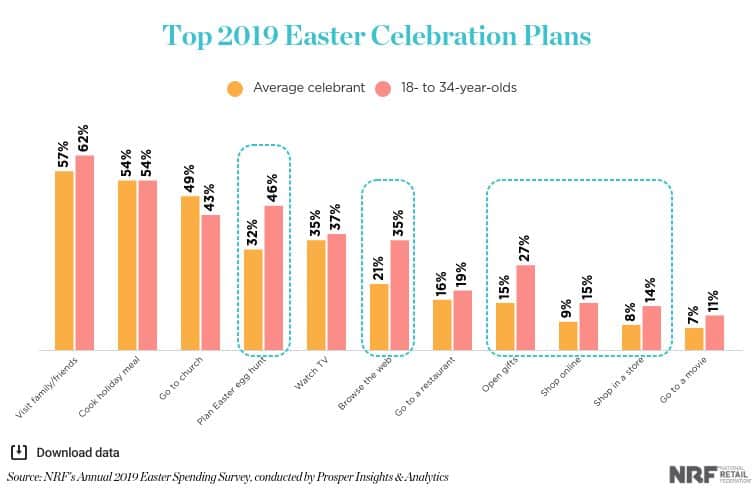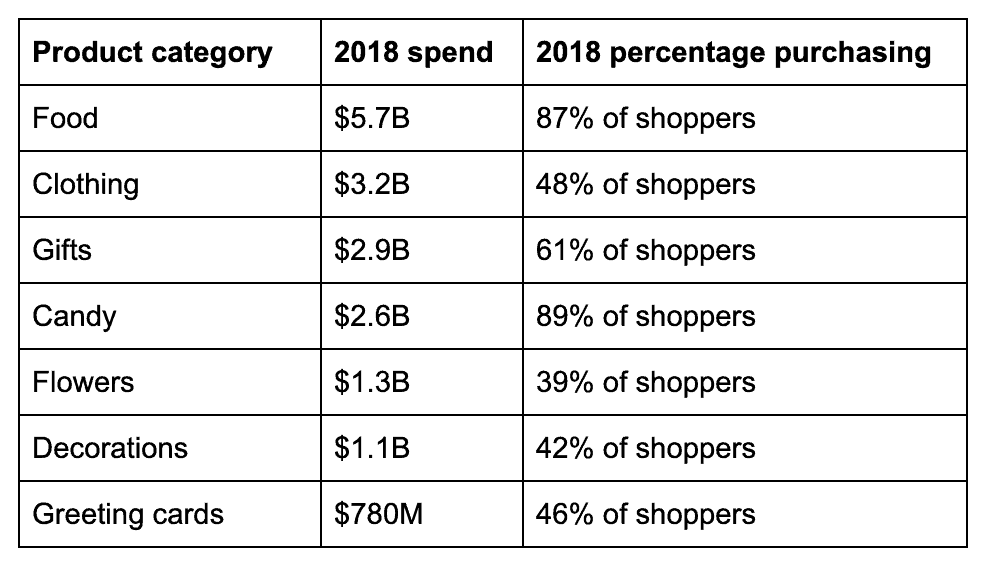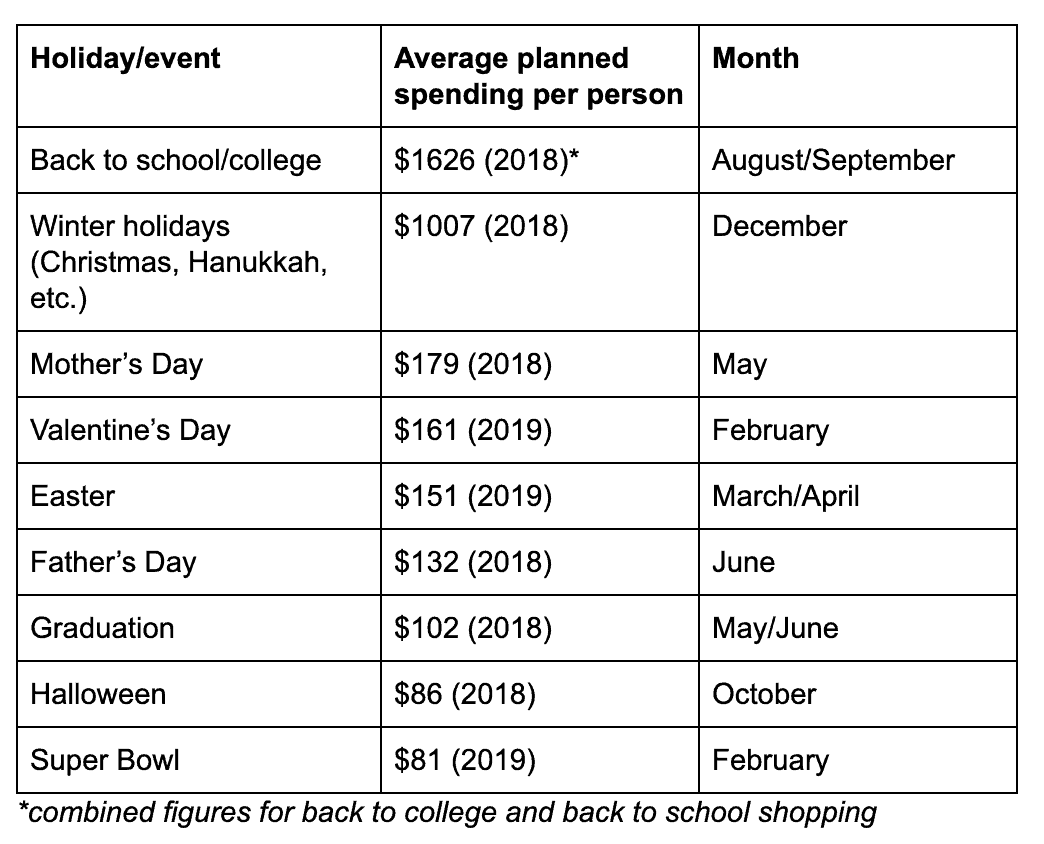Seasonal demand is a mixed blessing for ecommerce businesses: It means more orders, which is great, but it also means retailers need to move more goods faster to keep up with customer expectations.
You know the impact that the winter holiday season has on your ecommerce site. The other holidays demand your attention, too. Especially Easter. The spring holiday is bigger than ever and brings valuable lessons for ecommerce success.
The Easter retail parade
The National Retail Federation (NRF) released a report on Easter spending that demonstrates how big the pastel-colored and chocolate-focused spring holiday has become. Easter is now a retail mammoth: almost 80% of U.S. consumers said they plan to celebrate Easter—and apparently celebrating, includes buying. The NRF estimates that Easter shoppers will spend an average of $150 on holiday items. Overall, spending is expected to reach $18 billion for the one-day holiday.
The Easter retail wave has been gaining steam steadily over the last few years. Easter spending hit the $17 billion mark in total spending in 2013, and has been over $17 billion every year since 2016. The same trend marks average expected per person spending: around $150 per person every year since 2017.
Easter is also a big international hit. A Finder.com survey reports that 69% of British adults plan to spend £1.1 billion with an average spend of £30 per person for Easter—an increase over £755 million total and £24 per person in 2018. London is a popular Easter spot, with 72% of city-dwellers preparing to celebrate.
With an overwhelming majority celebrating Easter every year, it’s important for ecommerce retailers to recognize what consumers want for this dominant spring holiday. Retailers must also prepare for ordering spikes and increased demand in order to provide the best customer experience possible.
Easter is a big hit for younger American consumers
American consumers under 35 are driving the Easter retail explosion. The NRF reports that the under 35 age group’s interest in the holiday is even higher than the average number, at 85%. These younger consumers are more likely than the average adult to say they plan on celebrating Easter and are the only age group that’s seen a consistent increase in those celebrating compared with a decade ago.
While this age group is embracing Easter traditions like visiting family, cooking a large holiday meal, and planning Easter egg hunts, they’re establishing new traditions that rely on retail and ecommerce, like opening gifts, browsing products online, and shopping over the holiday:

More shopping means your mobile strategy needs to be ready to handle the increased traffic. NRF reports that consumers under 35 are also more inclined than ever to hop on their smartphones to assist in Easter shopping. In 2015, only 63% planned to use their smartphones to help with purchasing decisions around the holiday; that’s jumped to 74% this year, significantly higher than older age groups.
We can see that the Easter shopping surge isn’t going away anytime soon—it’s just changing as younger generations of shoppers leave their mark on retail. Ecommerce retailers can apply learnings from the recent Easter boom to their year-round strategy, like understanding which product categories will score big for shoppers based on the occasion or season, and how to prepare for order spikes and how to increase capacity to preserve a good customer experience.
The Finder.com survey reports that UK consumers aged 18-24 represent the lowest spending age bracket for Easter 2019, but consumer spending for the holiday is fairly uniform across age demographics:

Prepare your product categories for seasonal success
Chocolate, flowers, and eggs dominate the Easter season, but there’s a lot more to winning the Easter shopping wars. As consumers shop and spend more, they’re looking for a wider selection of goods to make their holiday great. Inc. provided a breakdown of the popularity of a range of Easter products in the U.S. in 2018:

Ecommerce retailers can get ahead by planning their seasonal strategies around event-centric must-have items and services.Also consider consumer spending on travel, as Easter is a major holiday for family gatherings. Travel Agent Central reported in 2017 that U.S. online travel sales increased by 17% compared to 2016 and as much as 16% compared to an average week. In the UK, Finder.com reports that 15 million Brits—just over 16%—are planning a vacation (holiday in British English) for Easter.
Boost your ecommerce elastic capacity year round
Each season fuels retail demand. Whether it’s for weather-related purchases like a summer sale on grills or a big markdown on jewelry for Valentine’s Day, your customers will turn to you when they need that certain something to make their holiday great. Ecommerce retailers should follow seasonal trends to ramp up inventory, customer service, and other crucial business functions to stay elastic when demand hits.
When orders spike on an ecommerce website, it can drain resources—if you’re unprepared. More orders coming in over a short period of time can make it difficult to keep on top of operational functions. Consider fraud protection. An increase in orders means you need to review more orders. Retailers have traditionally brought on temporary help to review orders during high-volume periods. Temporary workers often lack fraud expertise, leading to more bad orders getting through and more legitimate orders being declined.
But forward-thinking retailers have increasingly been turning to fraud protection models that use automation to provide the ability to scale up order review and chargeback management without bringing on additional employees. A few of these models, like Signifyd’s, provide guaranteed fraud protection, which means the fraud protection provider pays the costs for any approved orders that later turn out to be fraudulent.
Start thinking of how to handle fraud in a proactive way. You’ll see the difference in your revenue stream.
There’s little offseason for ecommerce. Holidays and major events dominate spending trends. Changes in weather dictate when and where customers will shop. See how the top U.S. consumer spending events based on average planned spend per person stack up:

The holiday or event itself is the main draw of course, but ecommerce retailers can also capture after-holiday retail magic through sales with price reductions and deals. Candy Industry Magazine reports that 48% plan to keep buying after Easter at an average of $19 per person. Consumers don’t see a desperate attempt to unload surplus stock. They just see a good value on chocolate treats at 75% off.
You know your products better than anyone else. Your next step is to build your strategy on seasonal demand so you can deliver your products to your customers with outstanding customer experience. Automation grants you elastic capacity in the face of increased orders, allowing you to better serve your customers. Show them they can count on you year round for a consistent shopping experience.
photo by Unsplash







